Master the Art: A Friendly Guide on How to Grow Weed
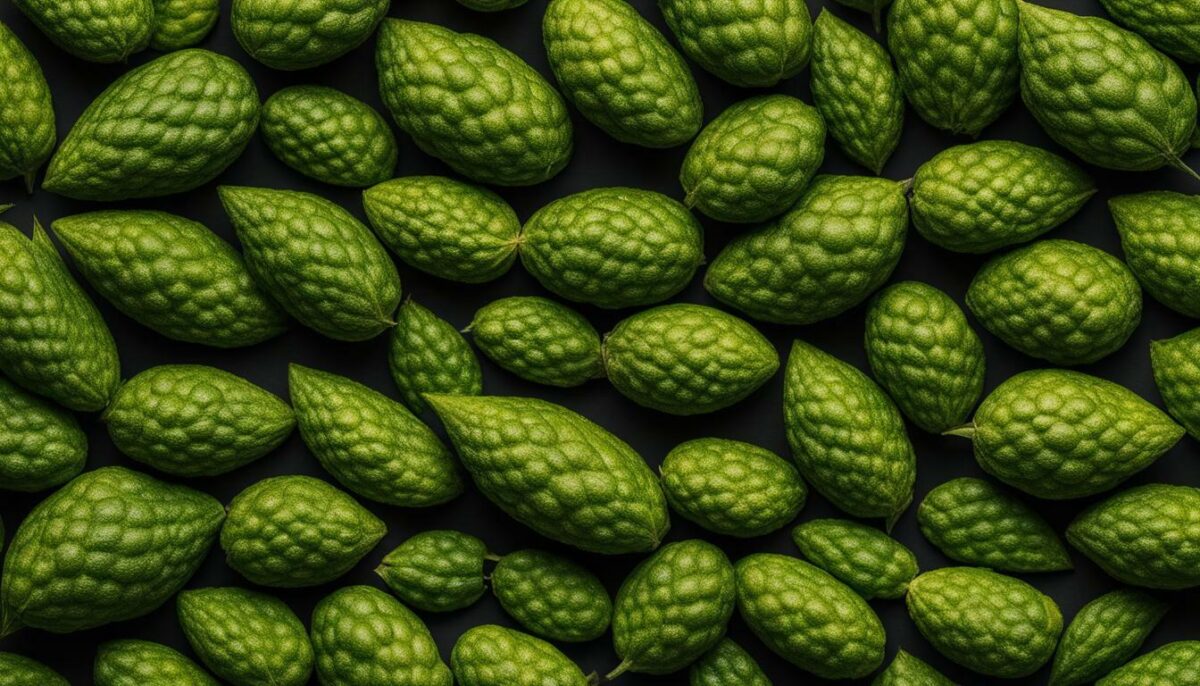
Welcome to my comprehensive guide on how to grow weed! Whether you’re new to growing cannabis plants or you’re an experienced grower looking to enhance your skills, I’ve got you covered. In this guide, I’ll walk you through the entire process of cultivating high-quality weed from cannabis seeds to harvest. By the end of this guide, you’ll be equipped with all the knowledge you need to grow your own marijuana plant successfully.
First things first, let’s address some of the basic questions that you may have. How to grow weed in the United States? What are the essential requirements for growing cannabis plants? Don’t worry; I’ll guide you through it all. We’ll cover selecting the right cannabis seeds, determining the optimal soil, managing humidity and temperature levels, and harnessing the power of sunlight.
Whether you’re looking to grow marijuana plants for medicinal or recreational purposes, this guide will help you on your journey. Let’s get started!
- Understanding the basics of growing weed is essential to achieve successful harvests
- Choosing the right cannabis seeds is crucial for growing high-quality marijuana plants
- Providing adequate water, nutrients, humidity, temperature, and sunlight are critical for cannabis plant growth
- Growing weed can be for medicinal or recreational purposes
- As we delve deeper into the guide, you’ll gain a thorough understanding of the skills required to grow cannabis plants
Getting Started with Growing Weed
Whether you’re looking to grow cannabis for personal or commercial purposes, getting started can be overwhelming. However, with the right guidelines, you can achieve success in no time. Here are the essential steps to help you get started:
Choosing the Right Seeds
The first step in growing weed is selecting the right seeds. Choose seeds that fit your intended use and growing environment. Feminized seeds are ideal for commercial growers, while autoflowering seeds are great for beginners as they are easier to grow. Consider factors like CBD/THC ratio, flavor and scent profile, and seed genetics when making your choice.
Providing Adequate Water and Nutrients
Water and nutrients are essential for your cannabis plants’ growth and development. Ensure that the soil is moist but not waterlogged to avoid drowning your plants and rot. Use quality nutrients that cater to the different growth stages of your cannabis plants.
Ensuring Proper Humidity and Temperature Levels
Humidity and temperature levels play a critical role in the growth of cannabis plants. The ideal humidity level should be 50-60% during the vegetative stage and 40-50% during flowering. Temperature should range from 70-85°F during the day and 58-70°F at night.
Harnessing the Power of Sunlight
Sunlight is essential for the growth of cannabis plants. Ensure that your plants receive adequate light by positioning them where they can get at least 6 hours of direct sunlight a day or use grow lights.
Understanding the Significance of Genetics
Genetics play an integral part in determining the quality and yield of your cannabis plants. Choose seeds from reputable breeders who have a proven track record of producing top-quality strains.
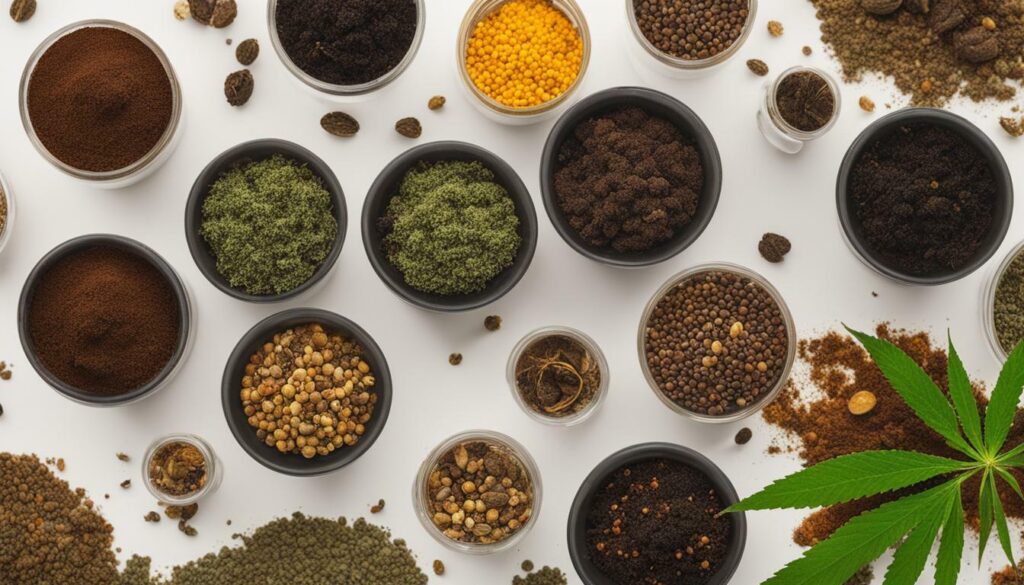
Now that you have selected the perfect cannabis seeds and have set up your grow space, it’s time to create the ideal growing environment. The space where your cannabis plants grow plays a significant role in their development, so it’s important to have the right balance of space, airflow, fans, lighting, temperature, and humidity.
Space: Ensure that your plants have enough space to grow and spread out their leaves. Crowding can lead to poor airflow and humidity, which can negatively impact growth and encourage pest infestations.
Airflow and fans: Proper airflow and ventilation are crucial for regulating temperature and humidity levels in your grow space. Consider the use of fans to circulate air effectively.
Lighting: For optimal growth, cannabis plants require specific light intensity and duration. Ensure that your lighting system provides enough light for your plants, with the right spectrum for each growth stage.
Temperature and humidity: Keep the temperature and humidity levels in your grow space within optimal ranges. The ideal temperature for cannabis plants is between 68-77°F during the day and 58-70°F at night. Humidity levels should be between 40-60% during vegetative growth and 40-50% during flowering. Use a hygrometer to monitor humidity levels and a thermometer to measure temperature.
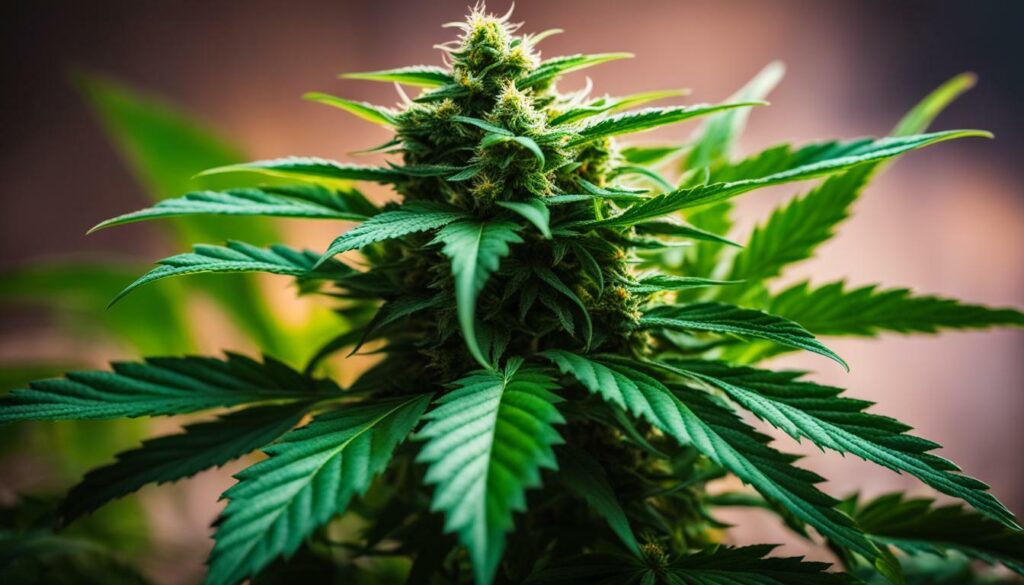
When these factors are balanced, you can create the ideal growing environment for your cannabis plants. Take the time to monitor and adjust them regularly to ensure healthy and productive plants.
Seedling Stage: Nurturing Young Cannabis Plants
The seedling stage is a critical period in a cannabis plant’s life cycle. It is during this period that the plant is most vulnerable, and its growth can be easily stunted or damaged. As a grower, your primary focus should be nurturing your young cannabis plants and providing them with the necessary care to ensure healthy and robust growth.
Seed Selection: The first step to ensuring a successful seedling stage is selecting the right seeds. Look for high-quality cannabis seeds from reputable suppliers to ensure that you are starting with a robust genetic foundation.
Nutrients: Seedlings have delicate root systems and don’t require much in terms of nutrients. It’s important to use a gentle, balanced formula to avoid overfeeding the plant. Use a nitrogen-rich fertilizer during this stage to promote healthy growth.
Watering: During the seedling stage, it’s crucial to avoid overwatering your plants. Overwatering can lead to root rot and other plant diseases. Water the plant sparingly, and only when the top layer of soil feels dry to the touch. Consistency is key here – avoid sudden changes in watering habits, as this can shock the plant.
Light: Light is crucial during the seedling stage, and your young plants will need a lot of it. Providing them with a full spectrum LED grow light will ensure they receive the right amount of light for healthy growth. Keep the lights close to the plants but not too close to avoid burning the tender leaves.
Temperature: The optimal temperature range for this stage is between 68 and 77 degrees Fahrenheit. Keep a thermometer nearby to ensure the temperature remains consistent and adjust the temperature if necessary.
By providing the right nutrients, watering sparingly, providing ample light, and controlling temperature, your young seedlings will have a strong foundation to ensure healthy growth.
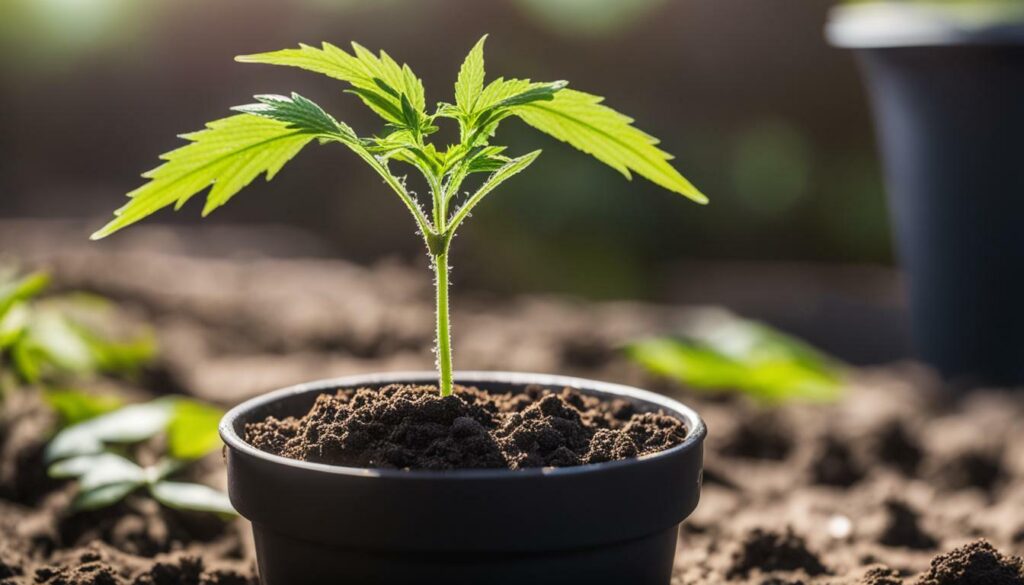
Welcome to the second stage of growing weed – the vegetative stage. During this period, your cannabis plants will experience rapid growth and development, leading up to the flowering stage. By providing the right amount of nutrients, pruning and training your plants, and controlling the photoperiod, you can ensure robust and bushy vegetation. Let’s dive into some essential techniques and tips for a thriving vegetative stage.
Providing Nutrients
During the vegetative stage, your cannabis plants require a balanced diet of nutrients to promote healthy growth. You can use either organic or synthetic nutrients, depending on your preference. Make sure to provide the right amounts of nitrogen, phosphorus, and potassium, as well as secondary and micronutrients. Always follow the manufacturer’s instructions for proper dosage and application.
Pruning and Training
Pruning and training are essential techniques to control the shape and size of your cannabis plants, as well as enhance yield potential. Pruning involves removing unwanted leaves and branches, whereas training involves manipulating the plant’s growth pattern. Popular training methods include topping, super cropping, and low-stress training. By pruning and training your plants, you can create a more even canopy and promote better light penetration.
Controlling the Photoperiod
Photoperiod refers to the amount of light your cannabis plants receive during the day and night cycle. During the vegetative stage, most growers provide their plants with 18-24 hours of light and 6-0 hours of darkness. By controlling the photoperiod, you can manipulate the plant’s growth rate and prepare it for the flowering stage. Make sure to provide adequate darkness, as this allows the plant to rest and recover from intense photosynthesis.
Training for Higher Yields
One of the best ways to increase your yield potential during the vegetative stage is to train your plants for multiple colas. By using techniques such as topping, pruning, and LST, you can encourage the plant to produce more flowering sites and ultimately, more buds. Make sure to start training early in the vegetative stage, as this gives your plants ample time to recover and grow.
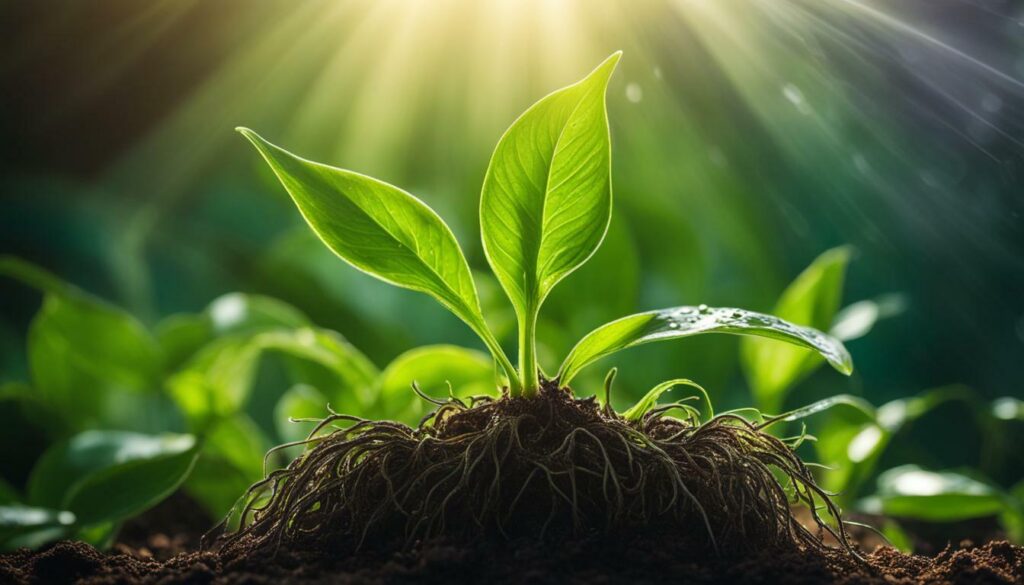
With the right approach, you can ensure a successful vegetative stage and set the foundation for a bountiful harvest. Follow these tips and techniques, and watch your cannabis plants thrive and flourish.
Flowering Stage: Cultivating Bountiful Buds
Congratulations! You’ve made it to the most exciting part of growing weed – the flowering stage. This is where all of your hard work and patience pay off in the form of bountiful buds. Let’s take a closer look at the key aspects of this crucial stage.
Light Cycle
In the flowering stage, the light cycle becomes crucial to the success of your cannabis plants. Most strains require 12 hours of uninterrupted darkness each day to trigger the flowering process. You can achieve this by adjusting your grow lights or moving your plants to a dark room. Make sure to maintain consistent light cycles to avoid stressing your plants.
Nutrients
Your cannabis plants require different nutrient ratios and levels during the flowering stage than in the vegetative stage. A high-phosphorus, low-nitrogen fertilizer is ideal for promoting bud formation and density. However, be sure not to overfeed your plants, as this can lead to nutrient burn and decrease yields.
Temperature and Humidity
During the flowering stage, maintaining optimal temperature and humidity levels is crucial to prevent pest infestations and mold growth. Keep the temperature between 68-78°F (20-25.5°C) and humidity between 40-50%. If your humidity levels are too high, consider adding a dehumidifier to your grow space.
Trichomes
Trichomes are the tiny, crystal-like structures that cover the buds of your cannabis plants. These contain the cannabinoids and terpenes that give your weed its unique aroma, flavor, and effects. To determine harvest readiness, examine the trichomes using a magnifying glass. Once they are mostly cloudy with a few amber ones, it’s time to harvest your buds.
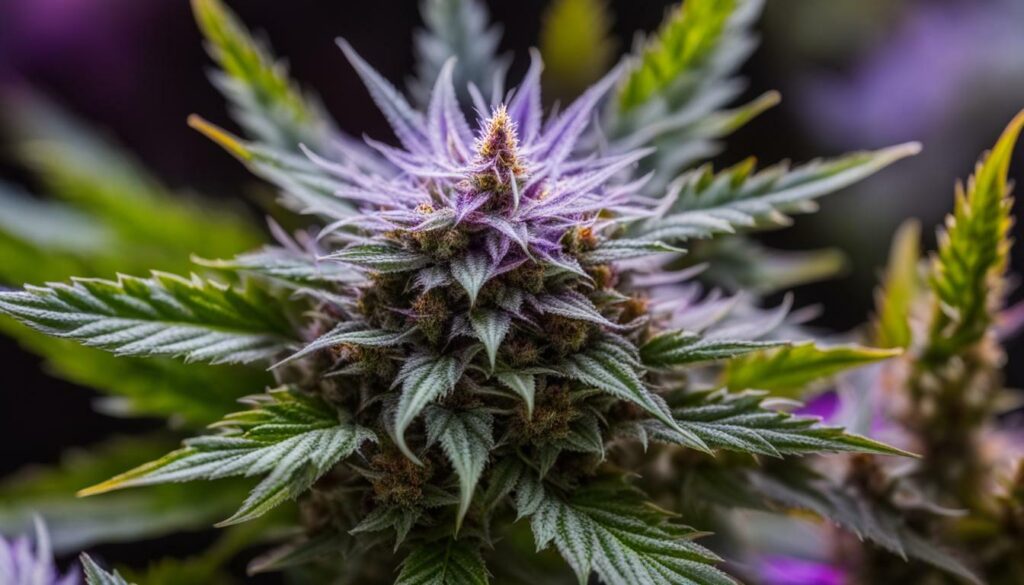
Remember, the flowering stage is a delicate time, and any stress to your plants can decrease yields and quality. Be patient, monitor your plants closely, and your efforts will be rewarded with bountiful buds.
Harvesting and Curing: Preserving Quality
Congratulations, you’ve successfully grown your cannabis plants! Now comes the crucial step of harvesting and curing them to preserve their quality and potency.
Harvest: When it comes to harvesting, timing is key. You want to ensure that the majority of the trichomes have turned cloudy or amber before harvesting. This is because the trichomes contain the majority of the cannabinoids, and harvesting too early can result in a less potent final product. Harvesting too late can also result in a less desirable flavor and aroma.
Trimming: Once you have harvested your buds, it’s time to trim away the excess foliage and leaves. This will not only improve the appearance of your buds but also improve the curing process.
Drying: The next step is to dry your buds. This can be done by hanging them upside down in a dark, dry, and well-ventilated area. Make sure to check your buds regularly and adjust the temperature and humidity levels accordingly.
Curing: Curing allows the buds to develop their full flavor, aroma, and potency by breaking down the remaining chlorophyll and other unwanted compounds. Place your dried buds in airtight glass jars and store them in a cool, dark place. Make sure to “burp” the jars daily to release any excess moisture and prevent mold from forming. A proper cure can take anywhere from 2-6 weeks, but the longer the cure, the better the final product.
Terpenes: Terpenes play a significant role in the aroma and flavor of your final product. By adjusting the curing process, you can maximize the terpene content, resulting in a more flavorful and aromatic final product.
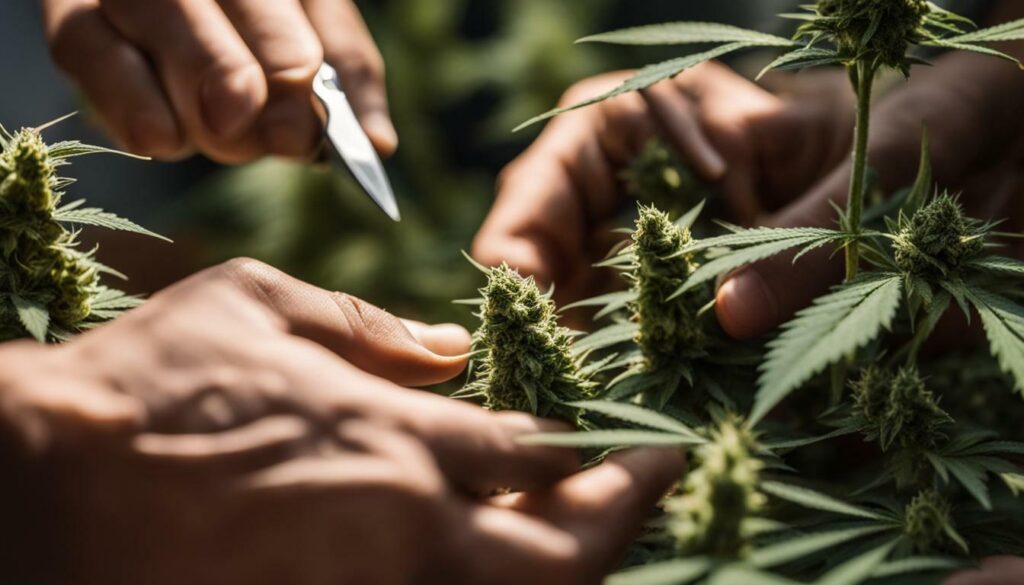
By following these essential steps, you can ensure that your cannabis buds retain their quality, potency, and flavor. Happy harvesting!
Common Issues and Pest Control
As much as we love our cannabis plants, they are not immune to pests, mold, and diseases. To ensure a successful and healthy harvest, it’s crucial to be aware of common issues and take steps to prevent and control them.
Pests: One of the most common problems that cannabis growers face is pests. These can include spider mites, aphids, thrips, and whiteflies. To prevent infestations, it’s important to keep your growing environment clean and well-ventilated. You can also use organic pest control methods, such as neem oil or insecticidal soap, to combat these pesky critters.
Mold: Mold can be a serious issue in cannabis cultivation, as it can quickly spread and ruin your crop. To prevent mold, maintain proper humidity levels, and ensure adequate airflow and ventilation in your grow space. If you do notice mold, remove it immediately and take steps to prevent its return.
Diseases: Cannabis plants are susceptible to various diseases, such as powdery mildew and root rot. To prevent these diseases, use high-quality soil and avoid overwatering your plants. Additionally, keep an eye out for any signs of disease, such as discoloration or wilting leaves, and take action immediately to prevent spreading.
Prevention and control: The best defense against pests, mold, and diseases is prevention. Regularly inspect your plants and surrounding areas for signs of issues, and take action immediately if you notice any problems. You can also use natural and organic pest control methods, such as ladybugs or predatory mites, to prevent infestations. By being vigilant and proactive, you can ensure a healthy and successful cannabis harvest.
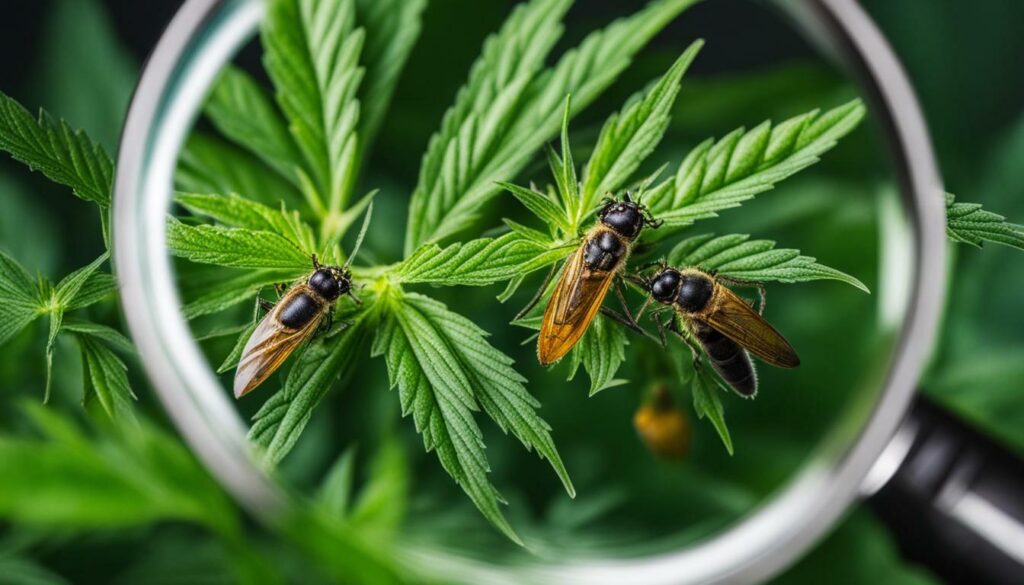
Congratulations, you have come a long way in your journey to growing weed! For experienced growers, there are several advanced techniques and tips that can help take your skills to the next level. Let’s explore some of these techniques:
Hydroponics
Hydroponics is a soil-less method of growing cannabis plants. Instead of soil, plants are grown in a nutrient-rich water solution. The benefits of hydroponics include faster growth rates, higher yields, and better control over nutrient uptake. However, it requires more equipment and maintenance than traditional soil growing.
Cloning
Cloning is the process of taking a cutting from a mature cannabis plant and rooting it to grow into a genetically identical plant. This technique allows growers to reproduce the same desired traits and characteristics from a high-quality mother plant. It also eliminates the need to germinate new seeds, saving time and money.
Maximizing Terpenes and Cannabinoids
Terpenes and cannabinoids are the compounds responsible for the aroma, flavor, and effects of cannabis. Experienced growers can use various techniques and methods to increase the concentration and diversity of these compounds in their plants, such as manipulating environmental factors, using specific nutrients, and selectively breeding for desirable traits.
Other Advanced Techniques
Other advanced techniques that experienced growers may explore include using CO2 supplementation to enhance growth rates, employing different types of lighting setups, and experimenting with various training and pruning methods to optimize plant structure and yield potential.
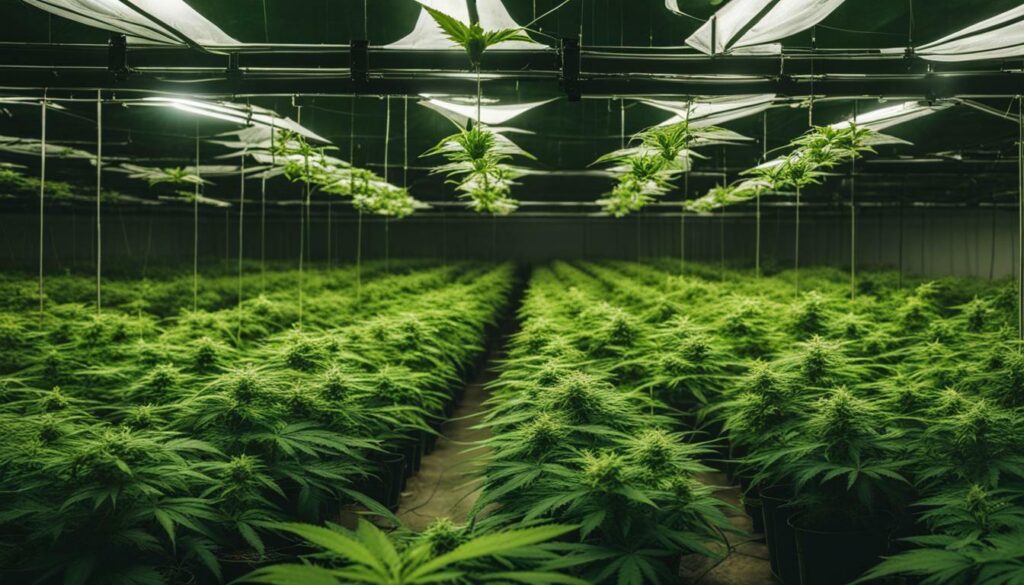
Now that you have learned some advanced techniques and tips for growing weed, it’s time to put your knowledge into practice. Remember that cannabis cultivation is an ongoing learning process, and there is always room for experimentation and improvement. Happy growing!
Conclusion
Thank you for joining me on this journey to master the art of growing weed. By following this friendly guide, you are now equipped with the knowledge needed to cultivate high-quality cannabis plants in the United States.
Growing weed can be a rewarding and exciting process, and I hope that this guide has helped you gain the confidence to cultivate your own garden. Remember to always prioritize the well-being of your cannabis plants by providing them with the right nutrients, water, and environment.
Happy Growing!
Now that you have completed this comprehensive guide on weed growing, I encourage you to continue exploring and learning about advanced techniques such as hydroponics, cloning, and terpene and cannabinoid maximization. With dedication and patience, you can become an expert grower and produce cannabis plants that are not only of high quality but also tailored to your unique preferences.
Lastly, it’s important to note that growing weed is subject to legal restrictions in some states of the United States, and you should always adhere to the local laws and regulations.
Thank you for reading this guide. Best of luck on your weed growing journey!
FAQ
Q: What are the basic requirements for growing weed?
A: The basic requirements for successful weed cultivation include selecting the right seeds, providing adequate water and nutrients, ensuring proper humidity and temperature levels, and harnessing the power of sunlight.
Q: How do I create the ideal growing environment for my cannabis plants?
A: To create the ideal growing environment, optimize your grow space, manage airflow and ventilation using fans, choose the right lighting for different growth stages, and maintain optimal temperature and humidity levels.
Q: What care do young cannabis seedlings need?
A: Young cannabis seedlings need proper nutrient balance, watering techniques, light requirements, and temperature control to establish a strong foundation for healthy and robust growth.
Q: How can I promote lush growth in the vegetative stage?
A: To promote lush growth during the vegetative stage, provide adequate nutrients, employ pruning techniques for shape and better canopy development, use training methods to enhance yield potential, and understand the role of photoperiod in controlling flowering.
Q: What should I know about the flowering stage of cannabis plants?
A: In the flowering stage, manipulate the light cycle, make nutrient adjustments, consider temperature and humidity, and pay attention to trichomes to ensure a successful harvest of bountiful buds.
Q: How do I harvest and cure my cannabis buds?
A: To preserve quality, harvest at the right time, employ proper trimming techniques, and ensure adequate drying and curing. Also, understand the role of terpenes in enhancing aroma and flavor.
Q: How can I deal with common issues and pests in my weed garden?
A: Address common issues such as pests, mold, and diseases by following prevention and control techniques. This will help safeguard your cannabis plants and ensure a successful harvest.
Q: What advanced techniques and tips can experienced growers utilize?
A: Experienced growers can explore topics such as hydroponics, cloning, maximizing terpenes and cannabinoids, and other innovative approaches to elevate the quality and yield of their cannabis plants.